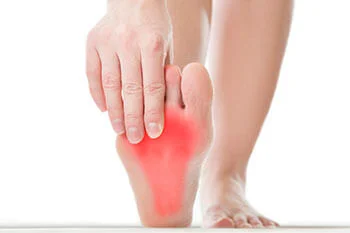Table of Contents
Introduction
The cuboid bone is located near the heel and toward the outside of the foot. The foot condition known as cuboid syndrome may happen when the surrounding joints and ligaments become injured or move out of place. This can be a common injury among certain types of athletes, such as ballet dancers, or it may happen from suddenly twisting the ankle by falling. Existing conditions can make some prone to developing cuboid syndrome. These can include obesity and previously breaking a bone that is connected to the cuboid bone. Additionally, having various types of arthritis or osteoporosis can lead to getting cuboid syndrome. Relief is often found when the offending activity is temporarily stopped and the foot is frequently elevated. Effective prevention methods may come from adequately warming up and cooling down before and after a workout, and cross training may help to rest the feet. If you have pain in the outside of your foot, it is suggested that you confer with a podiatrist who can properly diagnose and treat cuboid syndrome.
Cuboid syndrome, also known as cuboid subluxation, occurs when the joints and ligaments near the cuboid bone in the foot become torn. If you have cuboid syndrome, contact one of our podiatrists of Integrative Foot & Ankle Centers of Washington. Our doctors can provide the care you need to keep you pain-free and on your feet.
Cuboid syndrome is a common cause of lateral foot pain, which is pain on the outside of the foot. The condition may happen suddenly due to an ankle sprain, or it may develop slowly overtime from repetitive tension through the bone and surrounding structures.
Causes
The most common causes of cuboid syndrome include:
- Injury – The most common cause of this ailment is an ankle sprain.
- Repetitive Strain – Tension placed through the peroneus longus muscle from repetitive activities such as jumping and running may cause excessive traction on the bone causing it to sublux.
- Altered Foot Biomechanics – Most people suffering from cuboid subluxation have flat feet.


